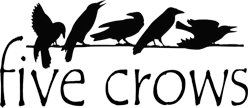Karen Moran
In the Norwegian culture knitting was typically passed down from generation to generation so, not surprisingly, Karen learned to knit from her Norwegian mother. Her mother had immigrated to the U. S. in April, 1941 fleeing the ongoing German occupation of Norway.
At 10 years old, Karen’s mother taught her to knit in the “European” method where yarn is carried on left hand during the knitting as opposed to the “American” method in which the yarn is picked up for each stitch. She gradually learned to knit scarves, hats, and mittens and, at 13, she knit her first patterned sweater. Norwegian of course! She used imported Peer Gynt Norwegian wool for these sweaters until it was no longer available in the US.
She subsequently added Icelandic sweaters to her inventory. Icelandic sweaters are knit with Lopi wool imported from Iceland. The wool is from a special breed of Scandinavian sheep, with a remarkable fleece, brought to Iceland by Viking settlers in the 9th and 10th Centuries. This fleece was unique because it consisted of two different types of hair: 12” to 19” course outer hair to protect the sheep from wind, rain, and snow; and shorter finer hair, which grows lower in the fleece, filling the space between the longer hairs for insulation against the cold. The properties of Lopi (long and short hairs), have made Icelandic wool a lighter, warmer, and more water resistant yarn than other yarns
As luck would have it, she married into an Irish American family and quickly learned to knit Irish sweaters for the family and, eventually added Irish hand knit sweaters in her inventory. The only wool used in Karen’s hand knit Irish sweaters is 100% Irish wool imported from Donegal, Ireland. The patterns are traditional Aran patterns/stitches which have different meanings: The most commonly seen Aran stitch is the cable which symbolize fishermen’s ropes and the hope of a good catch; diamonds are the shape of the fishing net and represent wealth and success; the honeycomb is said to symbolize good luck; and the Moss stitch symbolizes abundance and growth. Different combinations of these stitch patterns identify Irish clans .
Karen has shown Norwegian, Icelandic, and Irish knit sweaters in local area craft fairs (some juried) in Holliston and Framingham MA and in Nashua, Hudson, Derry, Bedford, and Goffstown NH.
Her love of crafting has led her to many new projects. She is always looking for new ideas for seasonal trinkets: Cork Reindeers, paint brush Santa’s, felted slippers, felted hats, and ribbon pine cones, Beside the Christmas themed ribbon pine cones, she has searched out patterned ribbon that symbolize social causes that are meaningful to her (breast cancer, autism etc.), sports teams, and fictional characters.

